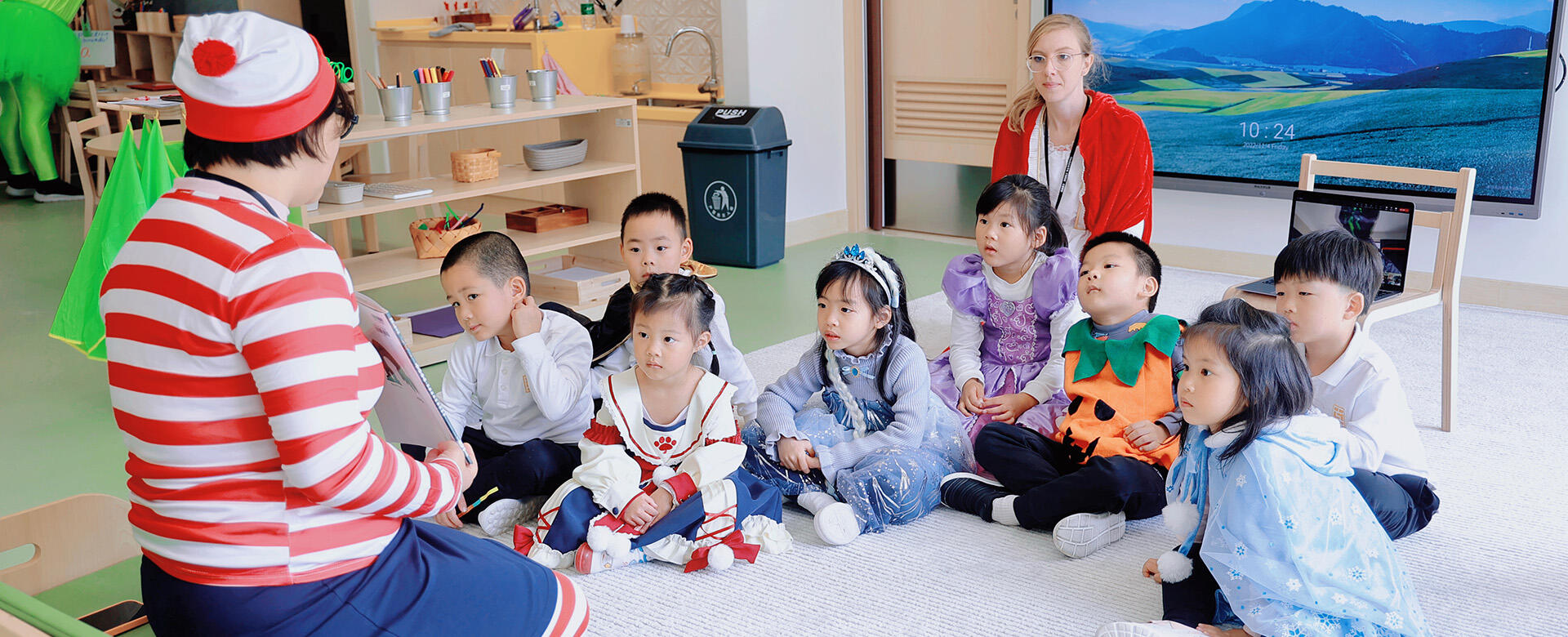
薛超
May Xue
幼儿园中方园长
Chinese Co-Head of Early Years
When you hear the word “Drama”, you might associate it with the performance of 'sound, stage, image and presentation'. However, Drama in Education runs far deeper than that. Drama in Education is a mode of learning that challenges and supports children to make meaning of their world and enables them to express and communicate ideas through participating in dramatic events.
Yes, this mean understanding our relationship with the world, understand what we have, what we lose and how we grow in society. Whenever I talk about ‘drama in education', the word ‘understand' always come to my mind, especially when working with children. Children are an important part of our social relationships, but it seems that we know it is important to give love to children, while we are often confused about what kind of love they need.
A recent fibre exhibition in Hangzhou resonated with many people - 'Being Theoria'. At the exhibition, fibres were not just 'fibres', but also invisible 'threads' and 'connections', there is a saying at the entrance of the exhibition hall: Everything is connected, and this is main tenet of Drama in Education.
This is also true in Drama in Education. Through drama, participants experience different roles and connect themselves to everything. It is a way of understanding beyond the traditional dramatic performance.
But do we really understand a child?
Drama in Education helps us, and our children, to ‘understand' each other, the people around us and what is happening. We often marvel at the philosophical power of children's simple words as they express themselves through the drama.
The story that the children have been exploring recently centres on how one responds when one's voice and choices are different from most others’. The children involved in the drama exploration are 5–6-year-olds living in a society dominated by adults. They experience the demands of being an “obedient child”, constantly test the boundaries of different rules, and have been caught up in various emotions of not being seen.
In the story, a group of "isolated" monsters live in a vast “Dark forest". They are not allowed to talk about “Humans”. Moreover, they are told to beware of “humans". Over and over again, the young monsters always ask the patriarch of monsters to tell the history of the monsters' ancestors who fought off the humans and built the present “Dark Forest". They understand the estrangement between humans and monsters and feel the "hatred" of the monster community towards humans. When a human baby appears in a river in the Dark Forest and is about to fall over a waterfall, the decision whether to save the 'human baby' is put to the children.
分析问题
Analyse the problem
Swipe left for English
觉察行为动机
Be aware of the motivation of the act
Eventually, the children chose to save the human baby. Why did they choose to save a human when they knew they would be questioned by the monster patriarch and the other monsters?
解决问题
Solve the problem
The human baby was found out by the monster patriarch. How will the little monsters cope with the patriarch?
In the key moments of the story, the children experience, analyse and try to cope with the different situations they encounter in different ways. In the process, they feel and see the emotions and motivations behind the actions of the different characters and feel the power of their own voices. When no one around them imposes ideas / approaches / reasoning on them, the children practise to find their 'own voice' in the chaos of information and assert their own beliefs. This is Drama in Education.